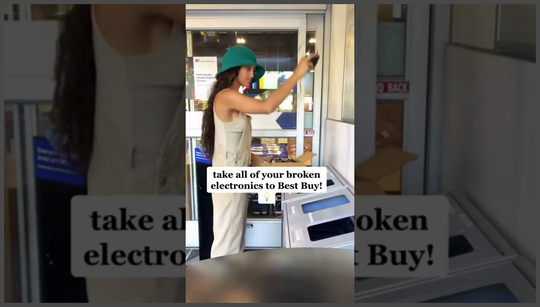Where is all the e-waste going?
It’s a question we don’t really want to think about, but it’s one we should ask. The amount of e-waste being picked up for recycling or reuse in the UK has plateaued in recent years, but official channels can only deal with so much of it. Less than 20% of the world’s e-waste is properly recycled through official channels, and the amount being generated each year is expected to increase to 74.6 million metric tons by 2030.
The amount of e-waste being collected in the UK has decreased in recent years, and we aren’t quite sure why. The reduction cannot be solely attributed to the COVID-19 pandemic, though it may have led to some reduction in e-waste. The government-set targets for e-waste collections in the UK have been consistently missed.
The decrease in e-waste collections isn’t limited to the UK either. Several other EU countries have also seen reductions in recycling. Ireland, for instance, has seen e-waste recycling drop by over 50% since 2016. The decrease is also not solely due to advancements in technology, as some have argued. Display equipment, such as computer monitors and TVs, has seen a significant reduction in recycling due to advancements, but this is only part of the picture.
New, lighter products are replacing older, heavier ones, resulting in less weight being collected for recycling. People are buying additional electronics without replacing older ones, leading to more electronics being hoarded, and old cables and chargers are also classified as e-waste and are often easily discarded.
“Less weight is being collected for recycling because of technology transition,” says Tom Winnard, head of policy at the Waste and Resources Action Programme (WRAP). “But that doesn’t mean there is less recycling – we are just measuring it differently.”
Material Focus, a not-for-profit organization, believes that total weight is not an accurate measure of recycling success. “The weight of WEEE collected has been used as an indicator of recycling success, but this doesn’t always reflect changes in the recycling market,” says a spokesperson.
“Electronic products are increasingly being designed to facilitate their re-use, repair and recycling. The weight of WEEE collected can also be affected by changes to collection schemes and product design.”
Proper recycling of old electronics is essential to reduce e-waste, but not all countries have the infrastructure to deal with it. Only 40 countries have implemented WEEE regulations, and only 37 have set up a national system to deal with e-waste. In the UK, registered WEEE schemes called PCSs deal with e-waste on behalf of companies. Retailers are required to offer take-back services for electronics, but these services are often not well-known. Free, in-store take-back services are available at many retailers, including Currys and Amazon.
If you are looking to recycle electronics yourself, both Recycle Your Electricals and your local authorities offer recycling services.
Properly disposing of e-waste ensures that it is either recycled, reused, or valuable parts are recovered. This can be done through a registered WEEE scheme or a private company that has been approved to deal with e-waste.















